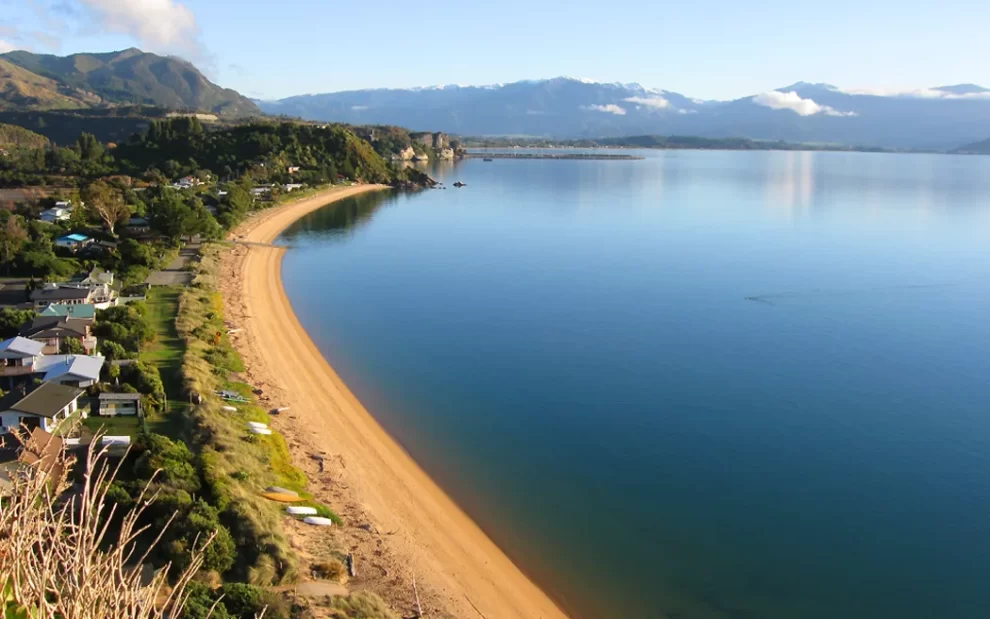A broken pipe that leaked raw sewage onto a Golden Bay estuary went undetected and unreported for six weeks.
A ban is now in place on gathering shellfish at Ligar Bay and Tata Beach, and locals have been advised that they should not have contact with the water in the estuaries until it had been thoroughly flushed by several tides.
At the Tasman District Council’s operations committee meeting on Thursday, councillor Chris Hill said it was “alarming” that the pipe had been leaking into the estuary for six weeks, if people had been collecting seafood there and eating it.
“That’s a real issue,” she said.
On social media, the council said the pipe had now been repaired, but they were unable to say how much raw sewage had flowed into the adjacent tidal area during the breakage.
The problem was discovered on the main highway halfway between the two beachside settlements last week.
The area is off limits until at least Wednesday and warning signs have been erected in the area.
Team leader water supply and wastewater Becky Marsay told the committee the pipe was damaged while some slipwork was being cleaned.

A temporary repair was put in place, and staff would look at a long term repair in the coming weeks, she said.
Hill said the slip site at Tata had been cleaned a number of times, and asked what the process was so that contractors knew exactly where the pipe was.
“It just seems like a low level of functioning, if we have got diggers clearing an area where there’s a sewer, and we can break it and not know we have broken it.”
Marsay said staff were not sure of what had happened yet, but the area did have quite a shallow pipe.
Group manager community infrastructure Richard Kirby said staff were investigating with the contractor clearing the slip to make sure they were aware of the location of the pipe, and that they suspected their operators probably weren’t aware of what they had done when they cleared it.
A replacement pipe would be placed deeper into the ground, so it would be given more protection, he said.
Sinkhole formed after Auckland sewer collapse, closing some beaches
The collapse of a Central Auckland sewer line has resulted in a massive sewage overflow pouring into Waitemata Habour, created a large sinkhole, and seen the closure of some Auckland beaches.
Hill said it was a wonder that cyclists didn’t go by and smell the leak earlier.
Kirby said the fact that it took six weeks to be reported was “probably symptomatic” of the fact that Tata was a holiday focused place with “hardly anybody there”.
That meant wastewater flows were “pretty low”. Had it occurred in the middle of summer, it would likely have been noticed within a day or two, he said.
Cyclists who went past likely thought it was a farmer’s septic tank malfunctioning.
“We do rely on the community to let us know when there is something amiss,” Kirby said.
“It’s unfortunate this one’s taken six weeks until it’s come to light.”
Sewage issues have been a headache for the council in the past fortnight. Last week the Motueka Wastewater Treatment plant started discharging partially treated sewage into an adjacent wetland area, and as a precaution, warnings have been put in place not to take whitebait or shellfish from the area.
A report presented to the council’s environment and regulatory committee showed that its eight wastewater treatment plants had been found to be 60% non-compliant over 2022/2023.

Councillor Christeen Mackenzie asked during the meeting if it was satisfactory that the council’s own systems were non-compliant, when the council expected compliance from everybody else.
In response to questions from Stuff, team leader monitoring and enforcement Carl Cheeseman said the non-compliance varied depending on the plant and the issues encountered.
An example would be Bell Island where their timed outfall discharged extended beyond the time set around the tidal flows to reduce pressure on the ponds, he said.
Source : Stuff



























